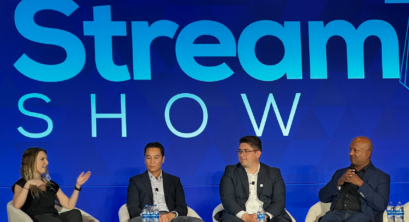What next for the subscription economy as industry insiders plot a new course?
by Giles Tongue | 23 Jun 2023

It’s been a busy couple of weeks for the movers and shakers of the subscription economy. In May, London hosted SubX World — a one-day event for the direct-to-consumer (D2C) subscriptions industry — followed swiftly by The StreamTV Show and SubSummit in the US.
For those who crisscrossed the Atlantic to take part, there was one question that kept cropping up — What next for the subscription economy?
For those focussed on the business of the digital economy, it’s a question that focuses on the fragmentation of content and channels, something that is increasingly being seen as the root cause of “subscription fatigue”.
It’s a position that emerged from the D2C opportunity first created by Netflix, but which is now used by most major content creators including Disney and HBO.
There was also much discussion about the growing tsunami of free ad-supported streaming TV (FAST) channels catering for niche audiences, “single IP” channels (Baywatch TV anyone?) and the resurrection of millions of hours of dormant back catalog content.
And it goes without saying that there was much interest in the spectacular growth currently being experienced in the subscription market which is expected to grow from $100bn in 2018, to $600bn by 2026, and the evolution of new business models in response to changing customer demand.
Interestingly, a lot of the talk focused on the potential solutions to these problems, particularly through the development of partnerships between content providers and distributors — and the technology shifts that will underpin those engagements.
Indeed, one music subscription service I spoke to explained how they no longer favored a D2C model and, instead, were looking to move to business-to-business-to-consumer (B2B2C). They had come to this conclusion — after taking a long hard look at their existing business model — that owning the billing relationship was becoming too difficult and probably best left to others.
Evolving distribution is key to breaking the subscription economy
Similarly, a major TV and movie streaming service I spoke to explained that they simply didn’t have the marketing dollars to maximize their reach. Instead, they benefited from being part of a subscription platform such as Verizon +play and piggybacking on their marketing spend and reach.
And while waiting for one symposium to start, another content provider confided that they did better when they were part of a curated ecosystem of subscription providers where people discover their service in much the same way that people browse titles in a bookshop.
For me, it is the unplanned conversations and insights you gain from these events that are just as important as any keynote address.
All of which merely underscored what we have already seen in our own data — that in recent years, streaming has become a crowded field resulting in a fragmented service for consumers. And that new distribution channels are going to be fundamental to solving these challenges.
What could slow the breakneck speed of growth in subscriptions is that fragmentation is nullifying the initial convenience and ease of use that made these services popular.
Consumers are now overwhelmed by the number of options and confused about where to find the latest content.
As Warner Bros Discovery president David Zaslav admitted recently, this creates a poor user experience and is bad for business.
“It’s not rational, and it’s not sustainable,” he said.
Consumers are driving change
Our data backs this up. According to our survey of 2,500 American consumers, nearly three-quarters (72%) say there are “too many” subscription services available today.
Almost half (45%) said they find it hard to keep track of where — and how — they signed up for these subscriptions. And a third (35%) have no idea how much they spend in total each month.
To address these issues, almost eight in ten (78%) want a single platform to manage all of their subscriptions. While a similar number (77%) want to be able to pay for all these subscriptions via one monthly bill.
To me, this merely sets the stage for “The Great Rebundling” — industry jargon currently in vogue that describes the return to multiple subscriptions in one place for streaming services.
However, while rebundling is a good way of framing this discussion, it doesn’t fully describe what we’ve been seeing in this space — and what we’ve called “Super Bundling.” Why? Because this isn’t just about streaming film and TV — it’s about changing the way consumers access products and services across markets, with streaming services at the forefront.
And it’s already happening. Just look at Verizon +play. Built using the Bango Digital Vending MachineTM, this service allows customers to manage their favorite streaming services and other subscriptions in one place and benefit from industry-defining bundles and offers.
As a result, Verizon customers no longer have to administer and manage the labyrinth of subscription services — each one signed up to, D2C website by D2C website.
Now — thanks to Super Bundling — all subscriptions are managed and paid for in one place.
Super Bundling is the model — why telcos and content providers win together
As this approach gains traction, it’s clear that telcos are ideally placed to bring together streaming services thanks to their expertise in customer care, existing payment relationships, and huge customer bases.
In the case of Verizon, for example, they already have over 140 million subscribers to their services. In fact, they’re already industry experts at bundling services, and perfectly placed to allow other content providers to join them within their new Super Bundling content hubs.
To underline this point, research firm Omdia shared some key data in their panel appearance with Bango at StreamTV. They revealed that 20% of subscription video on demand (SVOD) subscriptions globally are already sold through telcos.
What’s more, they forecast this figure will rise to 25% in 2026. In markets such as Latin America and EMEA, that share rises to almost half of all subscriptions to be sold through telcos.
As such, the recent events emphasized the win-win nature of the Super Bundling model. As Jeff Shultz, Chief Strategy Officer and Chief Business Development Officer at Paramount Streaming, said at the StreamTV Show in Denver: “A bundled subscriber is a superior subscriber. We are going to see something different in terms of engagement or in terms of lower churn, better retention.”
This was a sentiment shared by George Audi of Duolingo at SubSummit, who described entering Super Bundling as a means of distribution and accessing more consumers, who are high value and, therefore, likely to be sticky and so potentially also have a high lifetime value (LTV).
George also highlighted the unique opportunity to be creative with complimentary bundling, imagining, for example, a ‘lifestyle’ package of Duolingo, Calm and Masterclass. “Maybe a user is interested in two of the three, but will end up buying the bundle for the discount benefits and then stay on the bundle for the retention for the discount benefits”. By using Super Bundling content hubs, such combinations are easy and low-risk as exemplified by Verizon’s recent Netflix with Paramount+ (with showtime) through +play.
He also added a point on the advantage of leveraging the payment relationship telcos have with their customers: “In many countries, credit card penetration is low or there’s maybe less tolerance to use credit cards for subscription services. We know that carriers are a really popular way to pay in Asia and parts of Europe.”
Elsewhere, Eric de Cholnoky of AMC — speaking on the same panel — said that Super Bundling gives AMC the opportunity to come up with things that are unique and interesting in terms of acquisition and retention and at relatively low risk.
For many industry watchers, Verizon is the pacemaker in a growing race among telcos to bring streaming services and other subscriptions together in a single hub. These new distribution channels provide content providers with unimaginable reach to high-value customers for their subscriptions.
They also provide an opportunity to get creative with offers and partnerships that add huge value to consumers while offloading the complexity of managing payments while also giving consumers easy access to subscriptions (recurring payments) that are particularly useful to unbanked populations.
Again our research points the way. In a survey of senior leaders at telcos, nine in ten (89%) stated they are committed to offering a Super Bundling hub, while a similar number (88%) believe Super Bundles will be a ‘vital’ source of future revenue.
Who will eventually lead the way remains to be seen. For the movers and shakers of the subscription world, there are lots of questions that still need to be asked. Increasingly, though, Super Bundling is becoming the foundation of nearly every telco’s plans, and essential to the continued growth of the overall subscriptions economy.
Subscribe to our newsletter
Get the latest subscription bundling news and insights delivered straight to your inbox.



